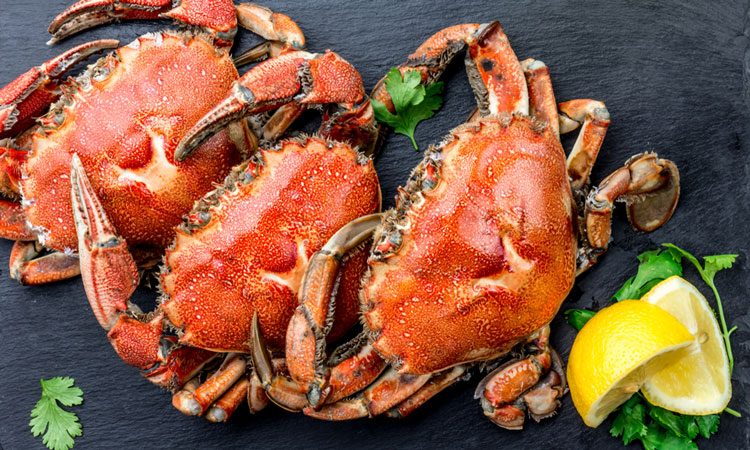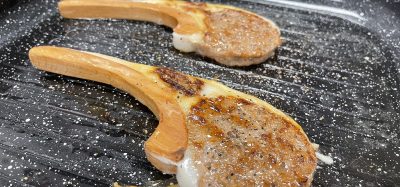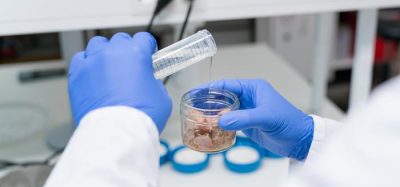Crab shells and tree fibres could replace plastic food packaging
- Like
- Digg
- Del
- Tumblr
- VKontakte
- Buffer
- Love This
- Odnoklassniki
- Meneame
- Blogger
- Amazon
- Yahoo Mail
- Gmail
- AOL
- Newsvine
- HackerNews
- Evernote
- MySpace
- Mail.ru
- Viadeo
- Line
- Comments
- Yummly
- SMS
- Viber
- Telegram
- Subscribe
- Skype
- Facebook Messenger
- Kakao
- LiveJournal
- Yammer
- Edgar
- Fintel
- Mix
- Instapaper
- Copy Link
Posted: 24 July 2018 | George Smith (New Food) | No comments yet
The material showed up to a 67 per cent reduction in oxygen permeability over some forms of polyethylene terephthalate (PTT).


CRUSTACEAN REPLACEMENT: Cellulose and chitin are the first and second most common natural polymers
The list of materials scientists are putting to the test in the quest to turn the tide on plastic waste is growing seemingly by the day. Now one more is to be taken into the fold – crab shells.
Researchers at the Georgia Institute of Technology have created a new material derived from crab shells and tree fibres that is showing potential to replace the flexible plastic packaging used to keep food fresh.
The new material, which is described July 23 in the journal ACS Sustainable Chemistry and Engineering, is made by spraying multiple layers of chitin from the crustacean’s exoskeleton and cellulose from trees to form a flexible film similar to plastic packaging film.
“The main benchmark that we compare it to is PET, or polyethylene terephthalate, one of the most common petroleum-based materials in the transparent packaging you see in vending machines and soft drink bottles,” said J. Carson Meredith, a Professor in Georgia Tech’s School of Chemical and Biomolecular Engineering. “Our material showed up to a 67 per cent reduction in oxygen permeability over some forms of PET, which means it could in theory keep foods fresher longer.”
Cellulose, which comes from plants, is the planet’s most common natural biopolymer, followed by chitin, which is found in shellfish, insects and fungi.
The team devised a method to create a film by suspending cellulose and chitin nanofibres in water and spraying them onto a surface in alternating layers. Once fully dried, the material is flexible, strong, transparent and compostable.
“We had been looking at cellulose nanocrystals for several years and exploring ways to improve those for use in lightweight composites as well as food packaging, because of the huge market opportunity for renewable and compostable packaging, and how important food packaging overall is going to be as the population continues to grow,” Dr Meredith said.
The research team also included Meisha Shofner, an Associate Professor in the School of Materials Science and Engineering and the interim executive director of the Renewable Bioproducts Institute, John R. Reynolds, a Professor in the schools of Chemistry and Biochemistry and Materials Science and Engineering, and Chinmay Satam, a graduate student at Georgia Tech.
The team had been looking into chitin for an unrelated reason when they wondered if it might have use in food packaging.
“We recognised that because the chitin nanofibres are positively charged, and the cellulose nanocrystals are negatively charged, they might work well as alternating layers in coatings because they would form a nice interface between them,” Dr Meredith added.
Packaging meant to preserve food needs to prevent oxygen from passing through. Part of the reason the new material improves upon conventional plastic packaging as a gas barrier is because of the crystalline structure of the film.
“It’s difficult for a gas molecule to penetrate a solid crystal, because it has to disrupt the crystal structure,” Dr Meredith said. “Something like PET on the other hand has a significant amount of amorphous or non-crystalline content, so there are more paths easier for a small gas molecule to find its way through.”
Related topics
Packaging & Labelling, Research & development, Sustainability, Technology & Innovation









